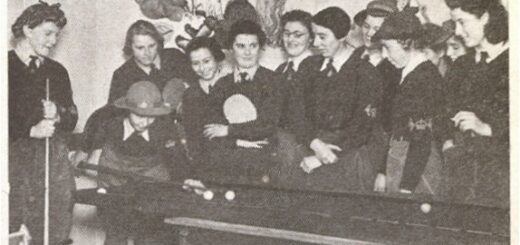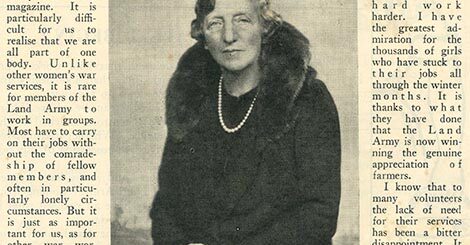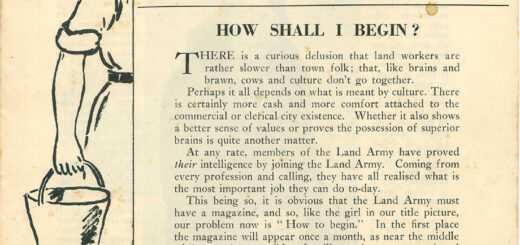Running the WLA: Raising the Profile
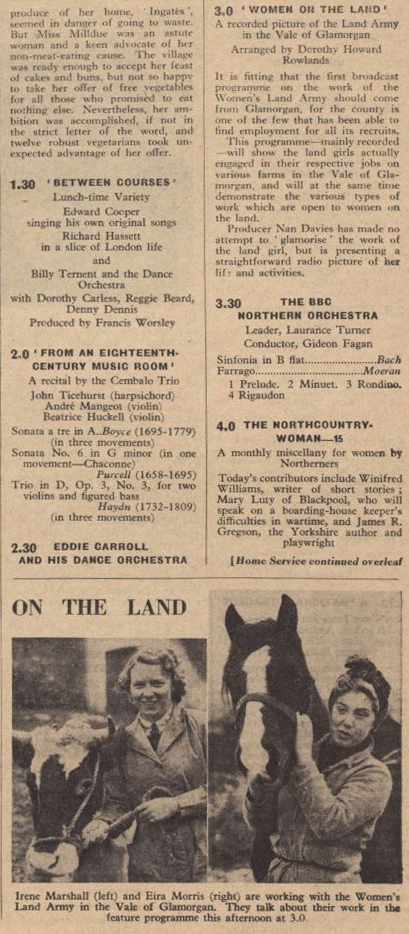
Source: Genome
In Britain, the WLA employed around 234,000 women on the land during the course of the First and Second World Wars. What was new during both World War One and Two was the unprecedented way that the government directed women with little agricultural experience, into farming roles. This month’s post examines the national and local efforts to raise the profile of the WLA.
Radio broadcasts
During the Second World War, BBC radio broadcasted 72 programmes on the subject of the WLA. One of the earliest broadcasts was on 27th March 1940, which focused on Land Girls in the Vale of Glamorgan. The Radio Times description notes how Glamorgan was one of the few counties to find employment for all Land Girl recruits. This is particularly significant since at the start of the war, local WLA representatives had to go to great lengths to persuade farmers (many of whom had never entertained the idea of women working on the land, except for seasonal harvesting) to employ young women on a permanent basis.
The radio programme, like many others in subsequent years, highlighted the range of work open to women. Such programmes were crucial for encouraging women to join the WLA at a time when they were being asked to support the war effort by joining either the armed forces or undertaking war production in factories.
Parades and demonstrations
While radio could capture the sounds and words of women working on the land, parades and demonstrations showed women’s work in action. Demonstrations allowed Land Girls to show off their newly-acquired farm skills to a local audience, both in person and to local people who opened their newspapers to find photos from such events.
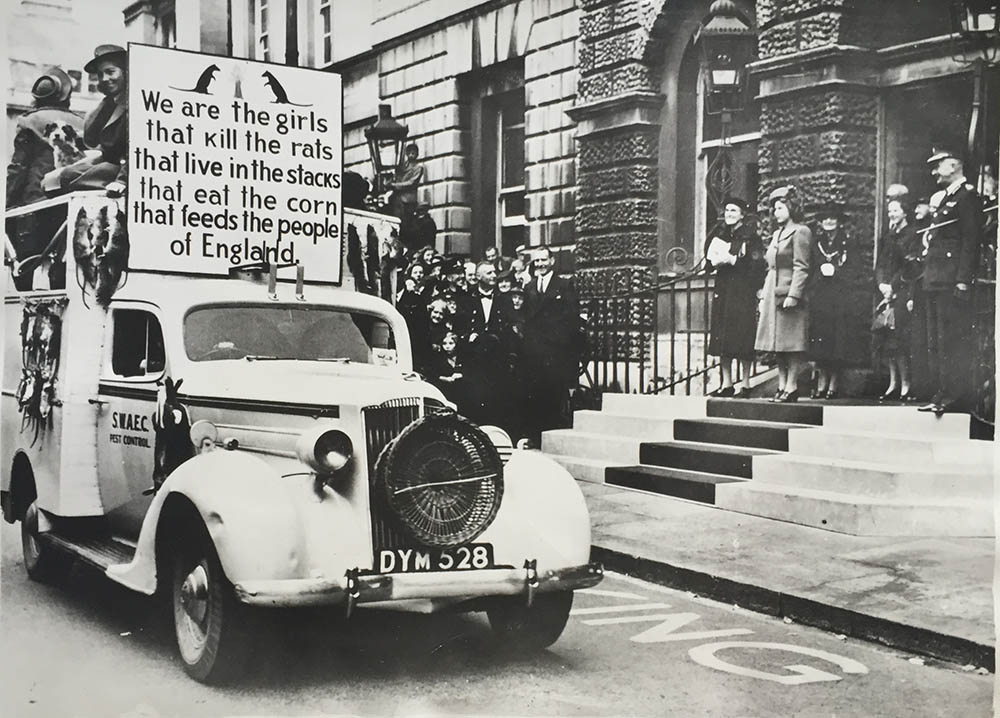
Source: Catherine Procter Collection
Demonstrations helped prove women’s competence to both the public and to farmers who were reluctant to employ women on the land, especially in the early 1940s. Even in October 1945, after the end of the war, a group of Land Girl rat catchers road a float past HRH Princess Elizabeth in Bath. Rats caught that day by the Land Girls’ fair hands hung from beneath the sign: ‘We are the girls that kill the rats that live in the stacks that eat the corn that feeds people of England’.
As opposed to being something which the public heard about on the radio, or read about in their newspapers, parades and demonstrations added an element of spectacle to women’s wartime work. As women carried out traditionally male work, their agricultural prowess became a source of entertainment and wonderment.
High profile figures
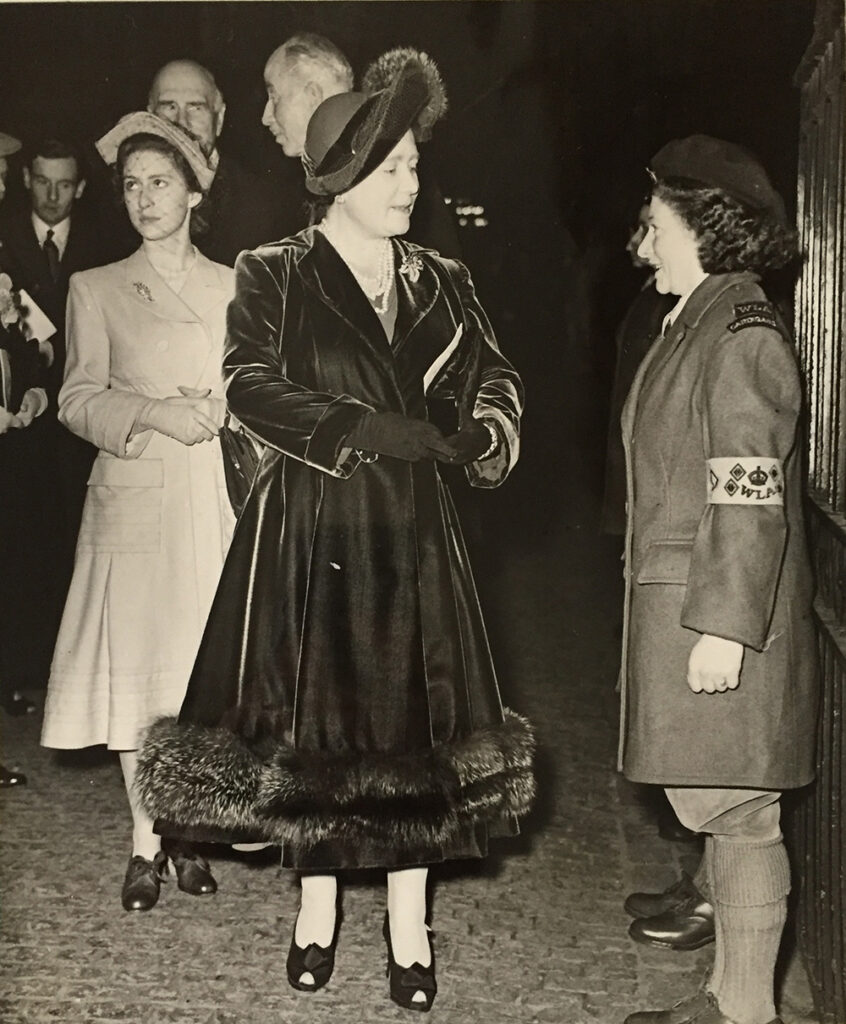
The attendance of high-profile figures at parades, demonstrations, and the opening of hostels, also gave the WLA a form of recognition and legitimacy. HRH Princess Elizabeth looking on as the Land Girl’s rat catching float processed by, gave their work royal recognition – and coverage in national, as well as local press. After the end of the war, the WLA still required women to undertake farm work, with many Land Girls recruited post-war. Accordingly, events with royalty present played a crucial role in keeping the work of the WLA in the nation’s imagination.
These events also helped to raise the profile of the work of the WLA to an international audience across the Atlantic. Not only was this photo of Land Girl rat catchers circulated in Britain, but it also reached an international audience as it was circulated to the New York Bureau. The press participated in an international publicity drive, which showcased women’s wartime efforts.
All in all…
Radio appeals, newspaper articles, and a whole host of events helped to cement the work of the WLA in the national consciousness. This type of promotion celebrated how women had stepped up to the challenge of working on the land, while strategically proving their competence, which many doubted. The publicity presented a celebratory narrative of work on the land; obscuring the more negative effects which some women experienced.
These promotional efforts reaped rewards for the WLA. By September 1943, recruitment to the Women’s Land Army was halted to encourage more women into aircraft production; 1000 women were enrolling to the Women’s Land Army per week! The WLA reached a high profile in the nation’s imagination and continues to do so today in our memory of the Second World War.
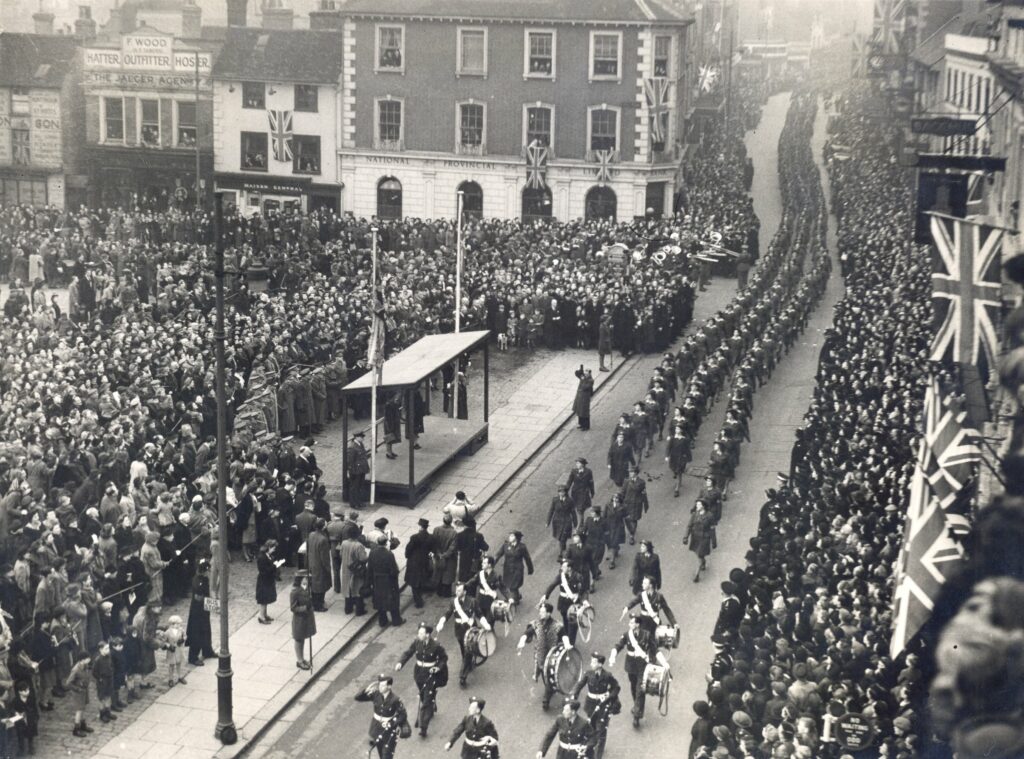
Source: Stuart Antrobus
